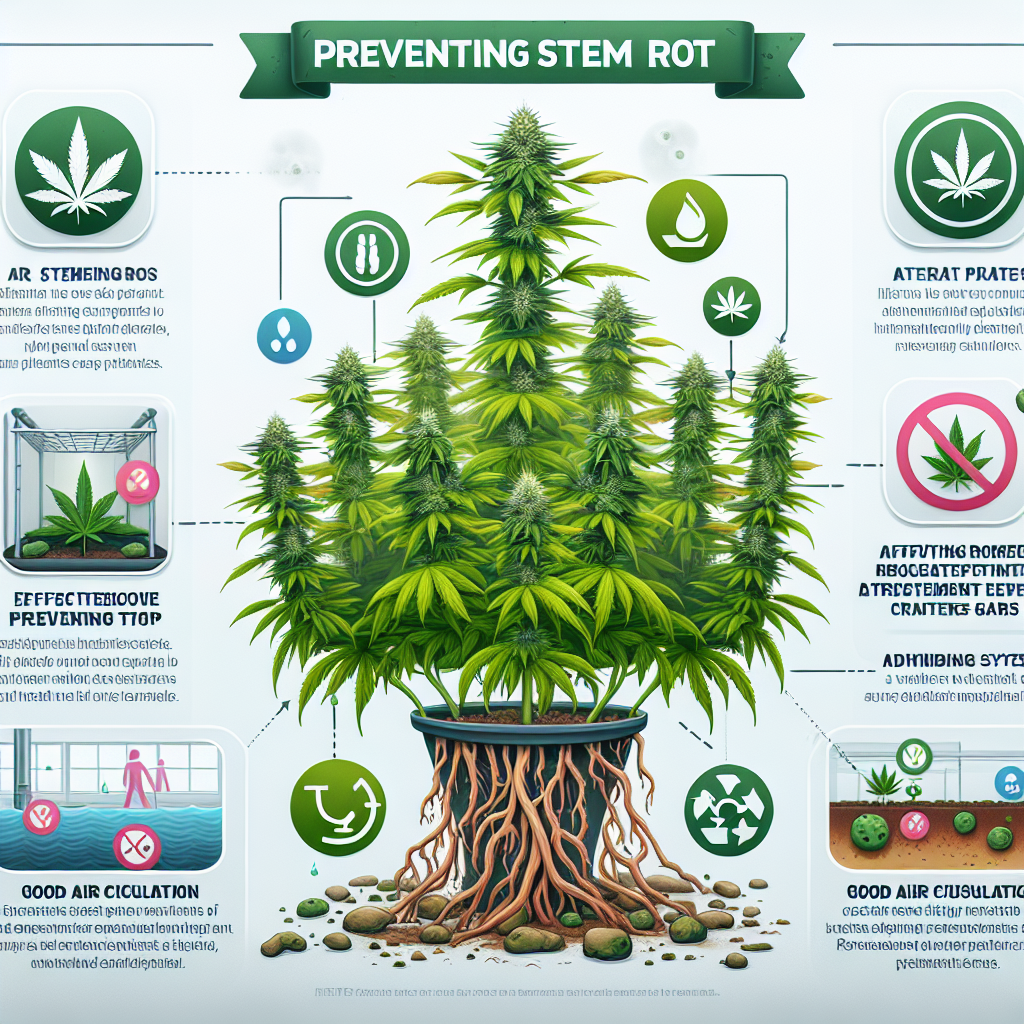Deterring Pests from Feasting on Sweet Corn
Published April 4, 2024 at 1:44 pm
Uncover effective strategies to safeguard your sweet corn against common garden pests, ensuring a bountiful and untarnished harvest from your backyard or farm.

Understanding Sweet Corn Pests
Growing sweet corn can be incredibly rewarding, not just for the taste but also for the pleasure of harvesting your own produce. However, if you've ever grown sweet corn, you might be familiar with the heartache of finding your corn nibbled or destroyed by pests. Let's talk about the key culprits who could be feasting on your corn.
Common pests that threaten sweet corn include earworms, armyworms, rootworms, and raccoons. Each one of these can turn your kernels into their dinner if not properly managed. Understanding the lifecycle and behavior of these pests is the first step in effectively controlling them. For instance, corn earworms are actually caterpillars that transform into moths, which means that controlling them might require different strategies at different stages of their life.
Natural and Organic Pest Control Methods
For many gardeners, maintaining an eco-friendly garden is a priority. You might be looking for ways to deter pests without resorting to harsh chemicals. One effective method is interplanting, which involves growing certain plants alongside your corn that repel pests. For example, planting marigolds can deter nematodes, while herbs like dill or coriander can attract beneficial insects that prey on corn pests.
Another natural solution is using insect-repelling oils like neem oil, which can be sprayed on sweet corn to deter pests. It's a natural pesticide that, when used correctly, won't harm beneficial insects but will keep the hungry ones at bay. Neem oil works by disrupting the life cycle of insects at all stages, acting as an insect repellent, antifeedant, and egg-laying deterrent.
Mechanical and Physical Pest Barriers
In addition to interplanting and organic sprays, physical barriers can be an excellent way to protect your sweet corn. Floating row covers, for example, can safeguard young corn plants from pests while allowing light and water to reach the crop. Additionally, netting or bags specifically designed for ears of corn can prevent pests from reaching the kernels once the corn has silked. These bags are commonly used for organic corn production and can make a significant difference in reducing pest damage.
For larger pests like raccoons, constructing a fence around your corn patch could be necessary. An electric fence, while more of a commitment, can be one of the most effective deterrents for larger animals and can be especially useful if you have persistent problems with raccoons year after year.
Chemical Control Options
While organic methods are preferred by many, sometimes they might not be enough, and that's when chemicals may come into play. It's crucial to choose pesticides that are explicitly labelled for use on sweet corn and to follow the application instructions to the letter. Look for products with ingredients that target the specific pests you're dealing with.
For example, products containing Bt (Bacillus thuringiensis) can be effective against corn earworms and are also safe for organic gardening. However, keeping in mind that timing is essential when applying these products is paramount. Applying when larvae are small and before they enter the ear will increase your chances of success.
Time-Tested Strategies: Crop Rotation and Timing
Crop rotation can play a substantial role in managing pest populations. By rotating where you plant your sweet corn each year, you can disrupt the lifecycle of pests that might otherwise overwinter in the soil and infest the next year's crop. Additionally, timing your plantings to avoid the peak moth flights that lead to corn earworm infestations can make a significant difference.
Knowing the local schedule for pests in your area is crucial. Access to local agricultural extension office resources or joining community gardening groups can provide you with invaluable insights into the timing of these pests where you live.
DIY Pest Management: Homemade Remedies
For the DIY enthusiast, homemade pest remedies can often be a first defense. An example is using a mixture of water and dish soap, which can deter some pests when sprayed directly on the plants. It's a gentle method that won't harm your plants, but effectiveness varies. For better results, you can add a little cayenne pepper or garlic to the mixture to give it an extra kick and further deter pests.
Keep in mind that while homemade solutions can be tempting, they often require frequent application and their effectiveness may vary. Before relying on them as your primary method, it's worth trialing them to see how your pests respond.
Expert Insight: Predatory Insects and their Role
Inviting predatory insects into your garden can be key in controlling pest populations. Ladybugs, lacewings, and parasitic wasps are all beneficial predators that feed on common corn pests. Creating a pollinator-friendly vegetable garden can help in attracting these allies. You could plant nectar-rich flowers, like alyssum or zinnias, to encourage their presence.
Additionally, purchasing and releasing these beneficial insects into your garden is another option. They are available from many garden supply stores and can make a significant impact on managing pests naturally.
Reviews of Pest Management Products
Let's take a look at some products you might consider to help protect your sweet corn from pests. It's said that the Safer Brand Caterpillar Killer II Concentrate, which contains Bt, has received positive reviews for being effective against caterpillars while being safe for the environment. Users often point out the convenience of the concentrate form that allows for several applications with a single purchase.
Pros:
- Environmentally friendly
- Effective against a wide range of caterpillars
- Concentrate form is economical
Cons:
- May require multiple applications
- Not effective against non-caterpillar pests
Find This and More on Amazon
Another product that garners positive feedback is the Bird-X Protective Netting for Fruits & Vegetables. This netting is specifically designed to keep birds and other wildlife away from your crops without harming them. Gardeners appreciate the durability of the material and the ease of installation over their plants.
Pros:
- Durable, long-lasting material
- Humanely protects crops without harm
- Easy to install
Cons:
- Netting may need securing to the ground to be effective
- Can be difficult to manage on larger areas
Find This and More on Amazon
The Havahart Critter Ridder is widely reviewed for its effectiveness in repelling larger pests like raccoons and squirrels. The granular formula is praised for its ease of use and longevity, as it remains effective for up to 30 days. Customers looking to protect their corn without causing harm to the surrounding wildlife often opt for this solution.
Pros:
- Long-lasting effectiveness (up to 30 days)
- Easy to apply
- Humane pest repellent
Cons:
- May need to reapply after heavy rain
- Granular form can be less precise in application
Find This and More on Amazon
Integrating Companion Planting
Companion planting is an age-old practice that can be particularly useful for deterring pests in the sweet corn patch. Certain plants can both enhance the growth of your corn and keep pests at bay. Basil, for instance, emits a strong scent that confuses pests, while legumes like beans fix nitrogen in the soil, providing nutrients for the corn.
Additionally, integrating flowers such as nasturtiums and sunflowers can draw pests away from your sweet corn. Nasturtiums are particularly proficient at luring aphids away, acting as a sacrificial crop, while sunflowers can attract birds that may also feed on insects troubling your corn.
Soil Health and Pest Resistance
Having healthy soil is the bedrock of a productive garden and also plays a vital role in pest management. Soil rich in organic matter not only supports robust plant growth, making sweet corn less susceptible to pest attacks but also nurtures a diverse ecosystem of microorganisms that help keep pest populations in check.
Regular application of compost, well-rotted manure, and mulching can significantly enhance soil health. Furthermore, practices like cover cropping with plants like clover or vetch can also contribute to soil fertility and provide a habitat for beneficial insects.
Monitoring and Early Detection
Keeping a close eye on your sweet corn is critical for early detection of pests. Regularly inspecting the leaves, stalks, and ears for signs of damage or the presence of pests can help you act quickly to address any issues. The earlier you spot potential problems, the more effective your interventions are likely to be.
For pests like the corn borer, which can burrow into the stalks, looking for telltale signs like frass (insect waste) can alert you to take action. Simple tactics like crop scouting can be surprisingly effective in deterring pests before they become a full-blown problem.
Using Pheromone Traps
Pheromone traps use scent attractants to lure and trap adult insects, interrupting mating cycles and reducing the future population of pests. These traps can be especially effective for pests like the corn earworm moth, helping you to reduce the number of larvae that will be targeting your corn in the future.
While pheromone traps are usually species-specific, they can be an important tool in an integrated pest management strategy. By monitoring the catch in these traps, you can also gain valuable insights into pest activity levels and peak times, which can guide your other control efforts.
Biological Control: Introducing Nematodes
For subterranean pests like rootworms, biological controls such as beneficial nematodes can be an effective solution. These microscopic worms penetrate and kill pests, providing a natural way to reduce pest populations without resorting to chemical insecticides.
Beneficial nematodes are available for purchase from garden centers and online suppliers. Once applied to the soil, they go to work attacking pest larvae. It’s important to follow the instructions for the timing and methods of application to ensure the nematodes are effective.
Proactive Planting Practices
Strategic planting and timing can do wonders in avoiding pest damage. Planting sweet corn early in the season, when pest numbers are lower, or staggering plantings every two weeks can help minimize the risk of wholesale crop infestation.
Choosing the right variety of sweet corn can also make a difference. Some hybrids are bred for increased resistance to specific pests. By selecting disease-resistant or pest-tolerant varieties, you enhance your corn’s ability to withstand an attack.
Encouraging Birds and Natural Predators
One of the most natural and visually pleasing methods of pest control is to invite birds into your garden. Many bird species are natural predators of corn pests. By installing birdhouses, birdbaths, and feeders, you can encourage a thriving bird population that will help keep pest numbers in check.
In addition to birds, bats are also effective at controlling moth populations, as they are natural predators of the night-flying insects that lay eggs on the corn. A single bat can eat thousands of insects each night, so consider installing a bat house nearby to encourage these helpful creatures.
Staying Informed on Pest Control Advances
The field of pest management is always evolving as new research and technologies emerge. Staying informed about the latest advances can provide you with new strategies to protect your sweet corn from pests.
Reaching out to local agricultural extension services or participating in gardening forums can keep you in the loop on cutting-edge practices. Such resources often provide growers with updates on low-toxicity and organic pest control products as they become available.
Final Thoughts on Protecting Your Sweet Corn
Protecting your sweet corn from pests is a multifaceted challenge that requires a proactive and integrated approach. Combining cultural practices, physical barriers, biological controls, and when necessary, chemical treatments, can create a robust defense system for your sweet corn crop.
Remember, the key to successful pest management is a combination of vigilance, flexibility, and sustainability. By staying informed and applying these strategies, you not only safeguard your sweet corn but also help maintain a balanced and productive garden ecosystem. Your efforts will go a long way in ensuring that it’s you, not the pests, who get to enjoy the fruits of your labor.
Understanding Resistant Sweet Corn Varieties
Selecting the right type of sweet corn can play a significant role in fending off pests. Certain hybrid strains have been developed with natural resistance to earworms, rootworms, and other common pests. While no variety is completely pest-proof, opting for resistant ones can reduce the likelihood of infestations and minimize the need for interventions.
When browsing for seeds or starter plants, look for those labeled as having improved resistance to specific pests. Plant breeders continuously work on developing hardier strains, so keeping an eye out for new releases each growing season can give you an additional edge in your pest control efforts.
In-Depth Understanding of Pest Life Cycles
The life cycles of pests play a crucial role in the timing and effectiveness of control measures. For instance, the corn earworm has a life cycle that can be quite rapid under favorable conditions, with multiple generations occurring in a single growing season. By understanding when these pests are most vulnerable, you can target them more effectively.
For example, targeting the larval stage of the corn borer with Bt products before they enter the plant stalks can vastly reduce their population. Similarly, knowing when moths are likely to lay eggs can guide the timing of preventative measures like row covers or pheromone traps.
Maximizing Environmental Conditions to Discourage Pests
Your corn’s growing environment can influence pest populations. Favorable conditions for corn can often mean unfavorable conditions for pests. Ensuring your sweet corn is getting the right amount of sun, water, and nutrients strengthens the plants, making them less hospitable to pests and more resilient in fending off attacks.
A simple strategy such as watering early in the day allows leaves to dry out before nightfall, reducing the risk of fungal diseases that can attract pests. Similarly, proper spacing between plants improves air circulation, which can help deter fungal growth and the pests that feed on compromised plants.
Regular Garden Clean-Up to Minimize Pest Havens
A clean and well-maintained garden is less inviting to pests. Regular removal of weeds, debris, and spent plants eliminates potential hiding and breeding spots for insects and other pests. This simple habit can also help prevent the spread of disease that can weaken plants and make them more susceptible to pest invasions.
As the growing season comes to an end, make sure to clear out old corn stalks and other plant matter, which can harbor overwintering pests. This proactive cleanup is an important step in preparing your garden for the next growing season, making it less appealing to pests from the start.
Innovative Solutions: Row Cover Innovations
Row covers have evolved significantly in recent years, offering gardeners advanced options for pest control. Modern materials allow for better breathability and light penetration while still providing a strong barrier against pests. Innovations in design also make them easier to use and adjust as your plants grow.
Some of the latest row cover systems include features like built-in hoops and adjustable sides. These improvements can make the application and removal process much more efficient, giving your sweet corn the protection it needs without excessive labor on your part.
Composting: Boosting Plant Vigor to Combat Pests
High-quality compost is not only beneficial for soil health; it can also fortify plants against pests. By enriching the soil, compost supports stronger plant growth. Healthy, vigorous plants are inherently more resistant to pest damage and better able to recover from attacks.
Regular additions of compost to your sweet corn beds will supply a slow release of nutrients, promoting robust root systems and strengthening the plant’s natural defenses. The ‘black gold’ of the garden, as compost is often called, will contribute to a bountiful and resilient crop.
Considering Soil Testing to Guide Garden Practices
Pest management is not just about reacting to problems, but also about creating an environment where pests are less likely to thrive. Conducting a soil test can provide you with vital information about your garden’s soil health and nutrient levels, enabling you to make informed decisions that can indirectly deter pests.
By knowing exactly which nutrients are needed, you can refrain from over-fertilization — a practice that can attract certain pests. Adjusting soil pH to optimal levels can also affect the availability of nutrients to your corn, further enhancing plant health and pest resistance.
Understanding Weather Patterns and Pest Dynamics
Pest populations can be greatly influenced by local weather patterns. Abnormally wet or dry conditions can either suppress or encourage the proliferation of certain pests. By paying attention to weather forecasts and historical data, you can anticipate potential pest problems and prepare accordingly.
For example, a particularly damp spring might lead to higher populations of slugs and snails, necessitating early preventive measures. Conversely, a drought might reduce the incidence of fungal diseases that often attract insect pests looking for weakened hosts.
Effective Data Tracking: Recording Pest Occurrences
One valuable yet often overlooked tool in pest management is record-keeping. By maintaining a garden journal and recording pest outbreaks, you can identify patterns and more effectively target pest control measures in future seasons.
Note when specific pests appear, where they cause the most damage, and what control measures were effective or ineffective. This historical record becomes a powerful tool in fine-tuning your pest management approach year after year.
Community Engagement for Wider Pest Management
Engaging with your local gardening community can significantly enhance your pest control strategies. Learning from collective experiences and regional knowledge can shed light on effective practices and what to watch out for in your area.
By collaborating with fellow gardeners through forums or local clubs, you can stay ahead of emerging pest issues, share solutions, and possibly even coordinate pest control efforts on a larger, more impactful scale. As the saying goes, ‘many hands make light work,’ and the same is true for managing garden pests.
Considering Integrated Pest Management (IPM) Certification
For those serious about pest control, obtaining Integrated Pest Management (IPM) certification can be an empowering step. This certification, offered by many agricultural extension services, provides comprehensive training in sustainable pest management practices.
As an IPM-certified gardener, you’ll be equipped with the knowledge to implement environmentally sensitive and effective pest control strategies. This education not only benefits your garden but also helps protect the surrounding ecosystem from the overuse of harmful pesticides.
Collaborating with Local Extensions and Resources
Your local cooperative extension service is an invaluable resource for pest management information. These services often provide free or low-cost workshops, soil testing, and personalized advice tailored to local conditions.
Leveraging the knowledge and services offered by your local extension can give you a wealth of strategies and tools to protect your sweet corn from pests, ensuring your gardening efforts are well-supported and informed by the latest research.
Embracing the Challenge of Organic Sweet Corn Production
While raising sweet corn organically adds an extra layer of challenge, it also brings numerous rewards, including healthier food and a more balanced ecosystem. By embracing the practices outlined throughout this article, you can effectively deter pests and reap the rewards of your labor.
With patience, persistence, and a little help from emerging technologies and established wisdom, organic sweet corn production is not only possible; it’s extremely gratifying. So, roll up your sleeves and give it a go – the satisfaction of a healthy harvest is worth every effort.
Shop more on Amazon
Flowers & Plants Team
Flowers & Plants Team


